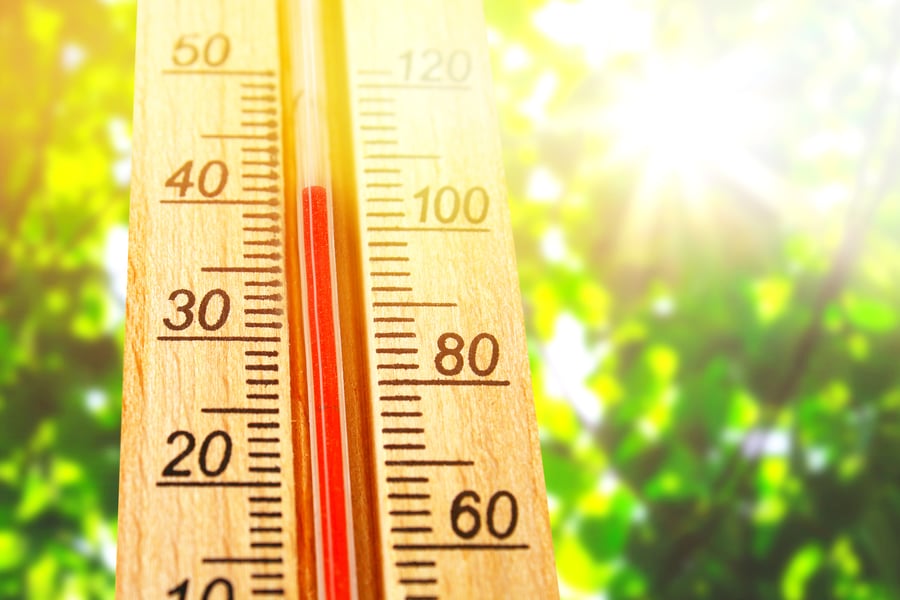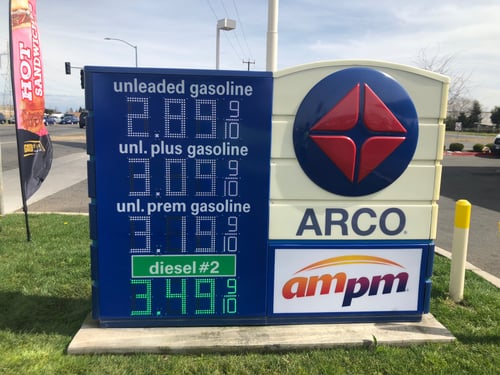Gasoline prices go up and down, and gas station price signs adjust day in and day out as a result. But can they also handle extreme fluctuations in temperature and other environmental factors?
Operations Manager Scott Honza explains why weather resistance is important and what makes PWM’s technology unique.
Here Comes the Sun
German-made components and the overall structure of these signs gives them an edge in harsh conditions. Unlike many electronics that must shut down to prevent damage to delicate components, PWM price signs remain operational in temperatures over 150o Fahrenheit.
The Tech: “The PWM Z-diode protects the LED against high voltage and heat. Also, the surface mount display digits lie flat on the interface so they can discharge heat directly into the surrounding air for better thermal management.”
Bring on the Rain
Corrosion is a constant threat in areas with high humidity. Add in driving rains, and it’s easy for water to penetrate many price signs and wreak havoc. PWM’s signs use a special sealing system that provides protection from the entry of water, dust, and insects. Each SMD is individually coated to protect it from water damage.
The Tech: “The IP67 coating allows submersion in water up to 1 meter. Similar technology is used to protect circuit boards in products like waterproof cameras, phones, and watches. We like to dunk our PWM components in a tank at tradeshows, so people can see with their own eyes that they still work underwater.”
Blowin’ in the Wind
A tall sign with a flat face is an easy target for high winds. But a PWM sign is no pushover. Our engineers perform a structural analysis on each sign installation including a swinging test to ensure winds and stormy weather can’t topple the mast.
The Tech: “If there’s a risk of the sign being toppled, we can use solutions like a tuned mass damper that reacts to vibrations and balances the mast. It’s similar to the technology used to keep skyscrapers steady.”
No More Cloud Days
What if the weather isn’t violent—just gloomy? Drivers still need plenty of advance notice that a gas station is coming up. PWM signs automatically adapt to the ambient brightness, adjusting luminosity of the digits to be highly visible in all conditions.
The Tech: “PWM’s SMD LEDs are constantly responding to the environment, using only the amount of energy required. This saves gas station owners on power consumption and provides a longer service life.”
Weather around the World Makes PWM Prices Signs the Smart Choice
According to Scott, “We have clients in Africa, Australia, Asia, South America and of course North America with some of the harshest climates in the world. From desert to sweltering heat, they are using the SMD technology from PWM because our products have the reliability that they need with their signs to support their families.”
To learn more about how PWM signs outlast the competition, contact our team today.





.png?width=500&name=Screenshot%20(48).png)

